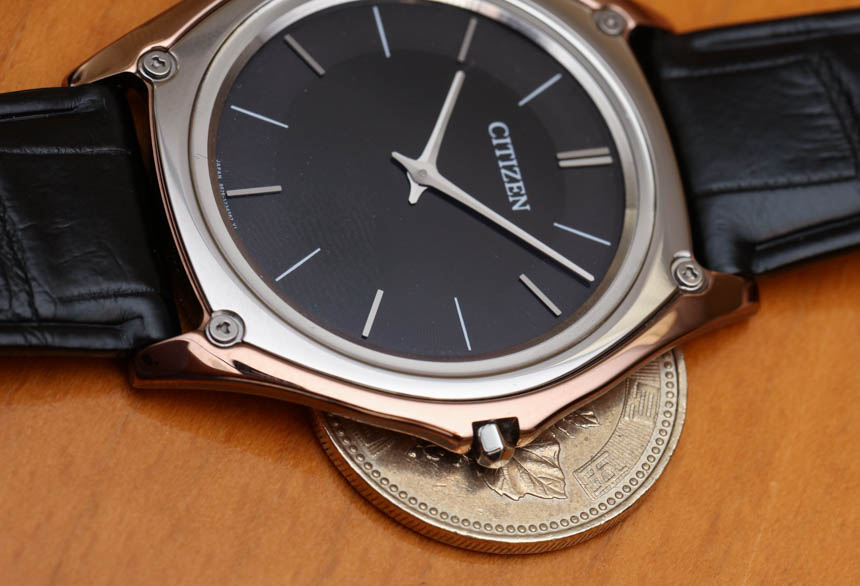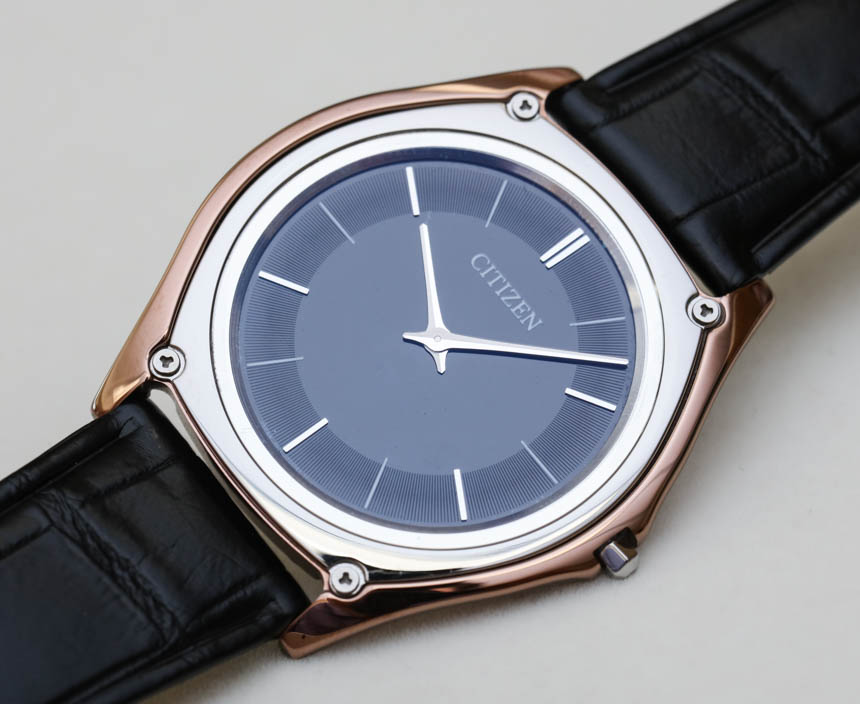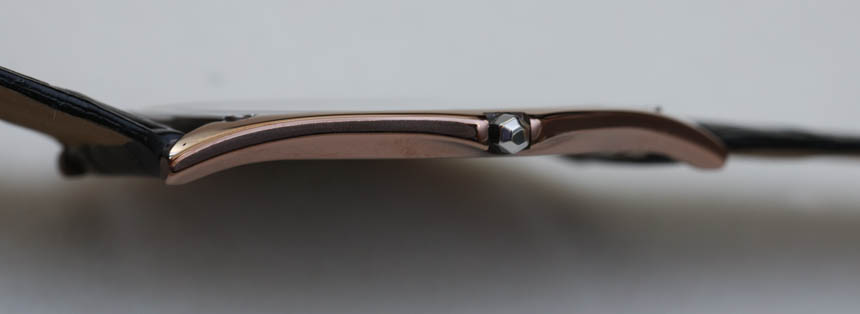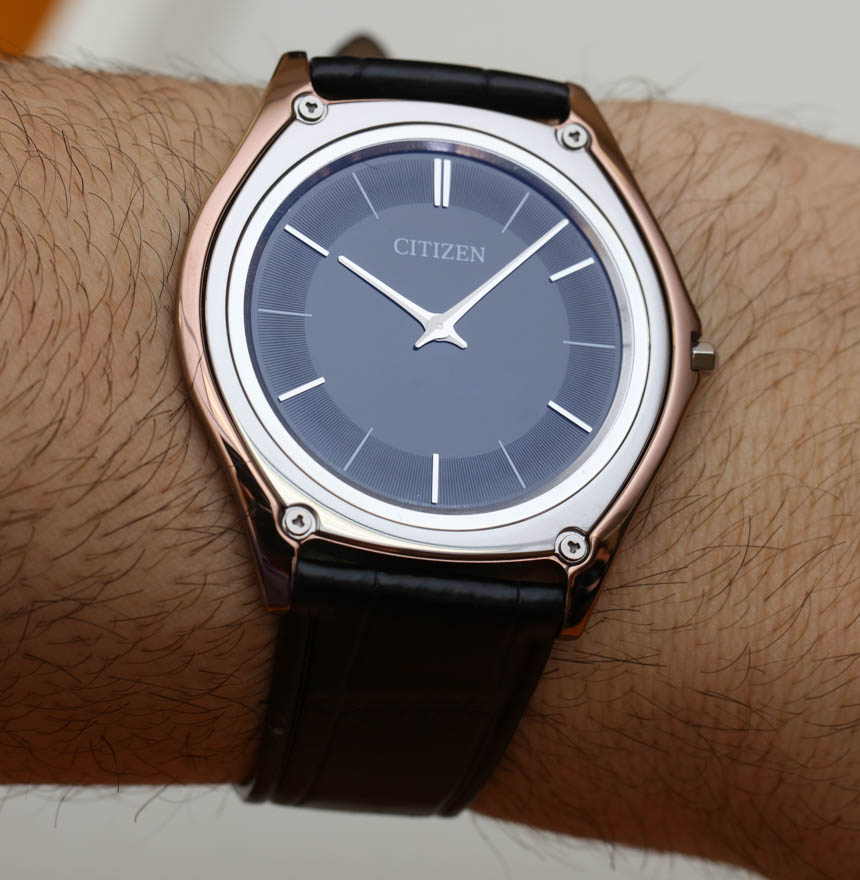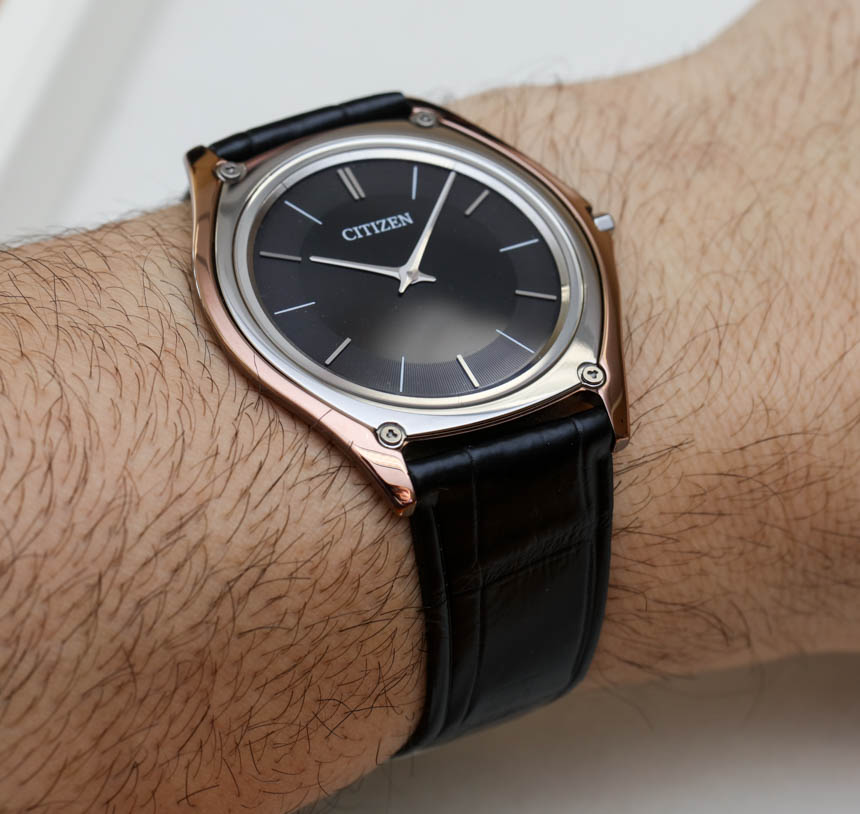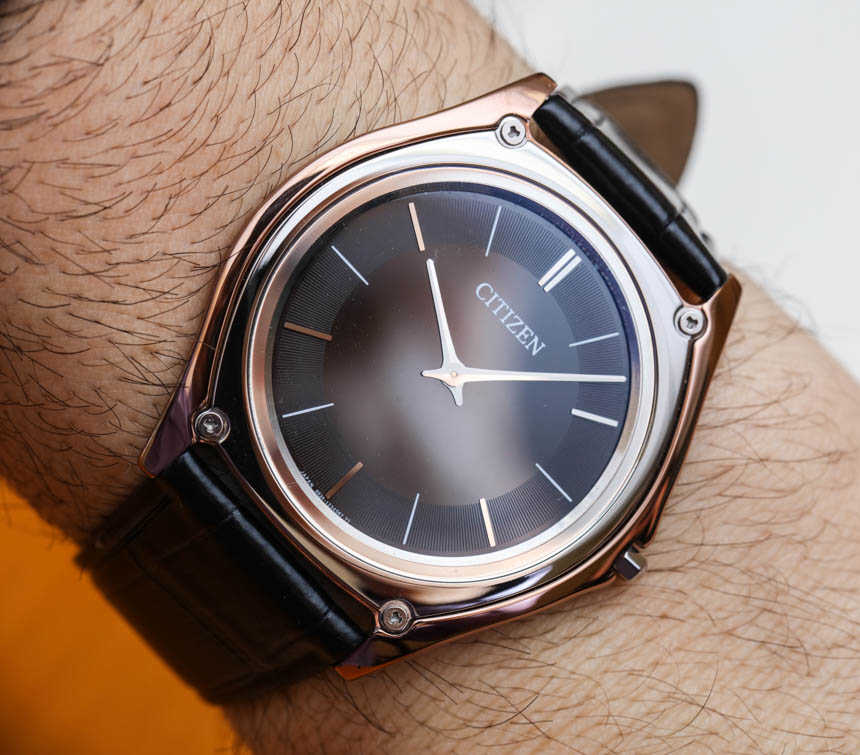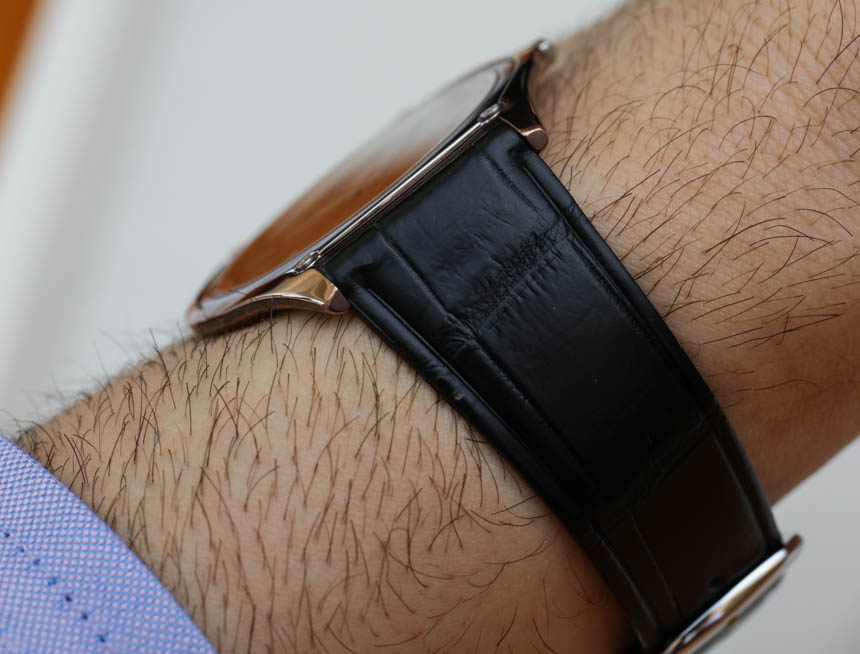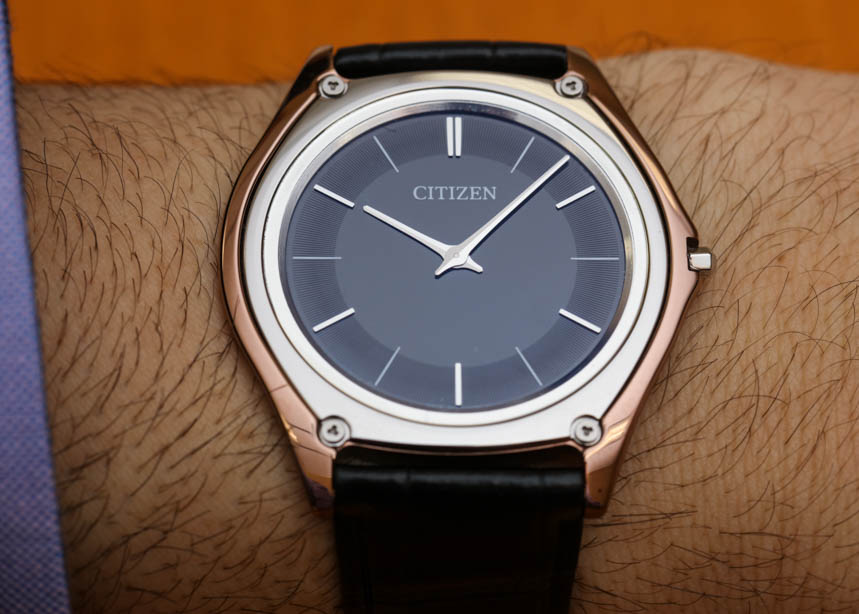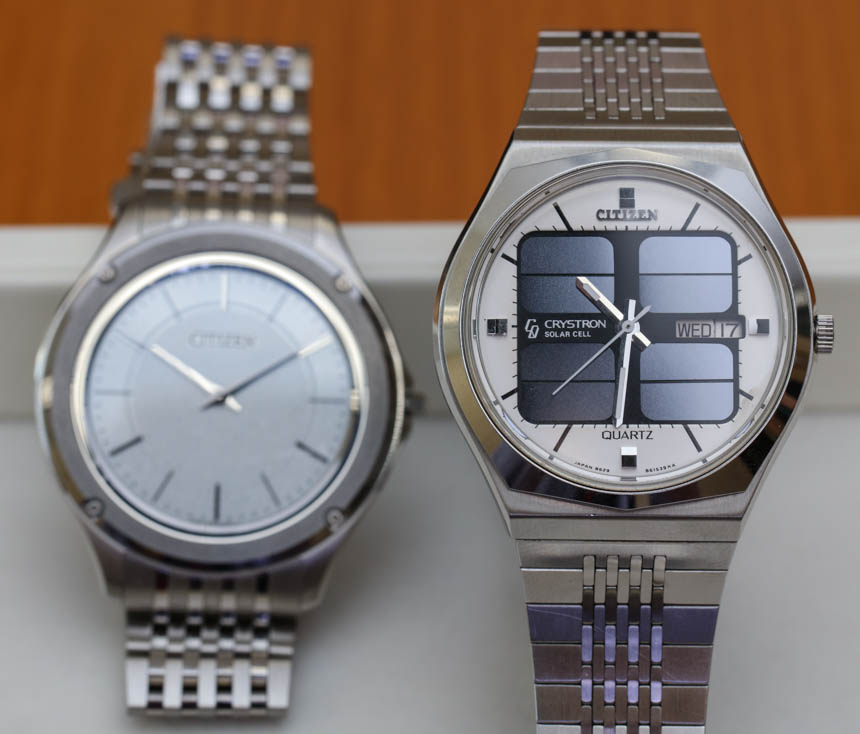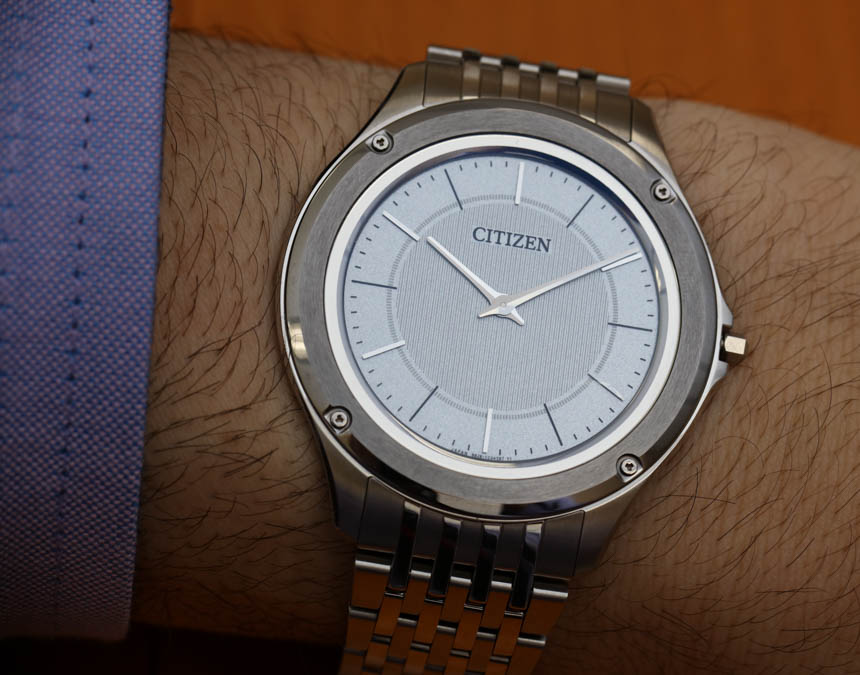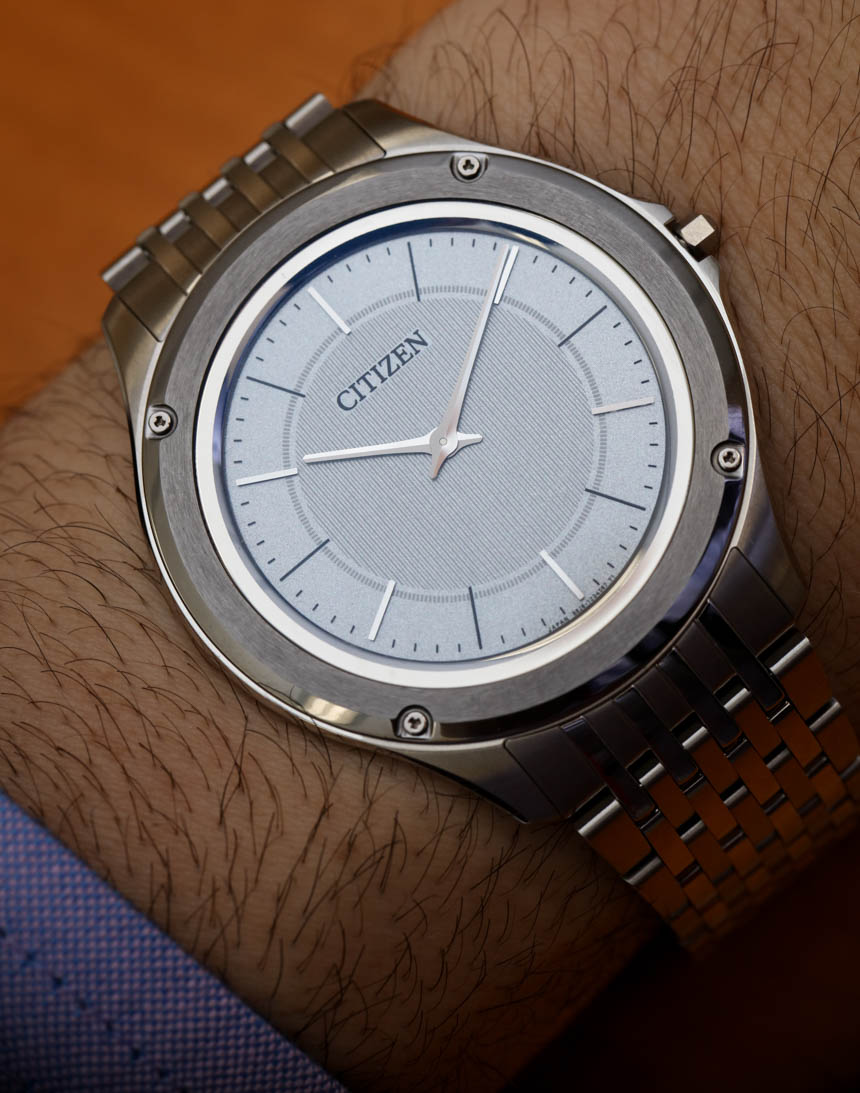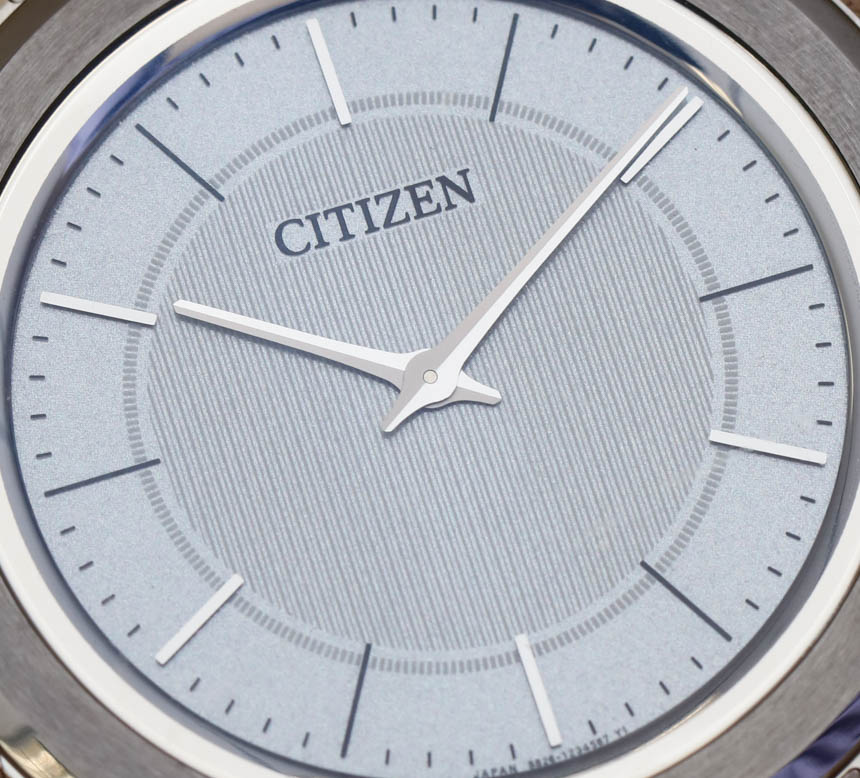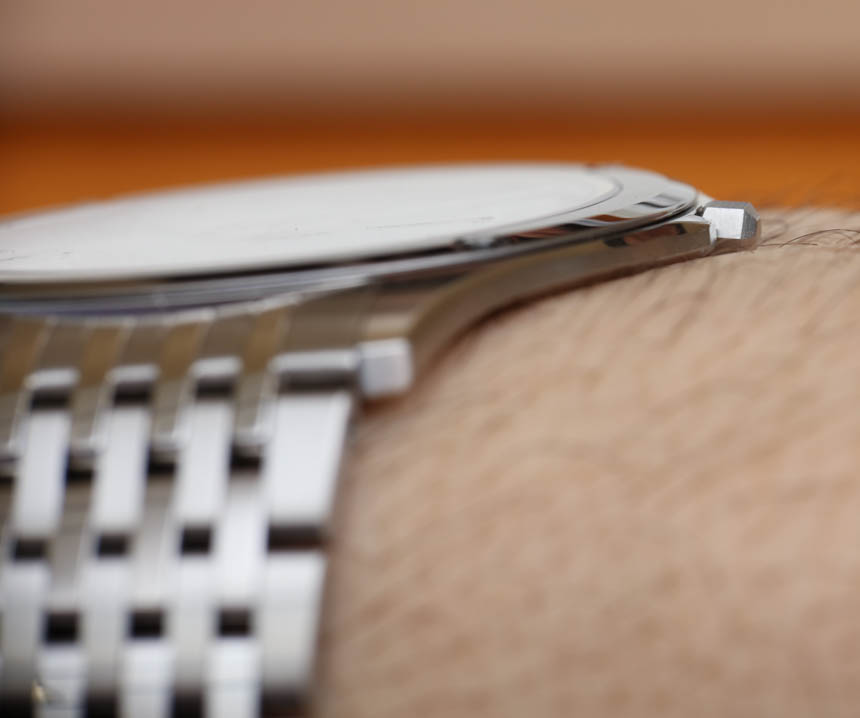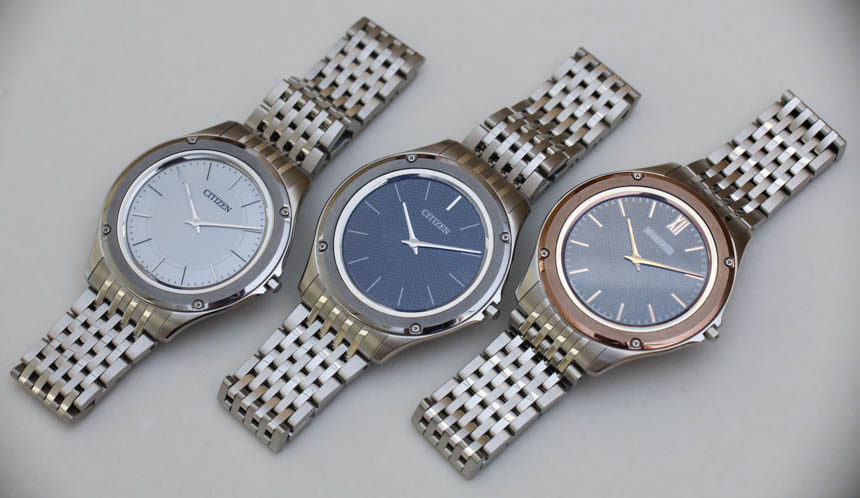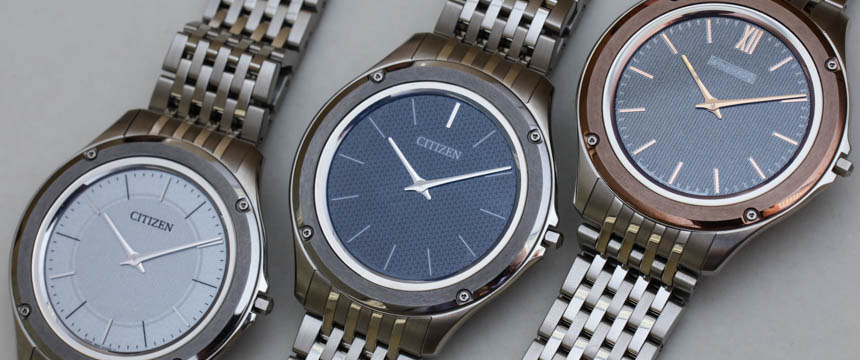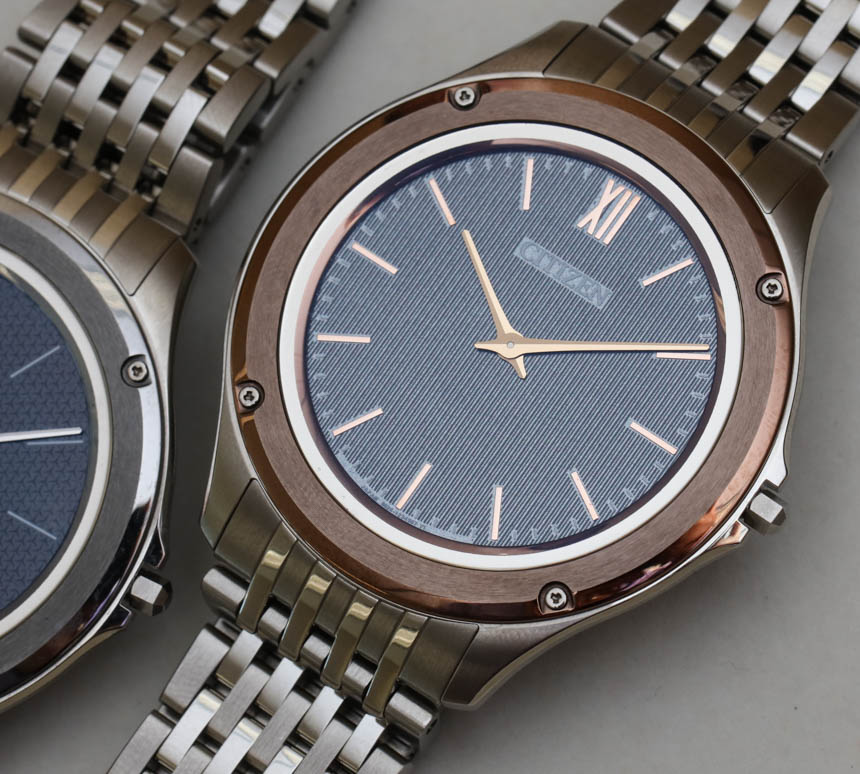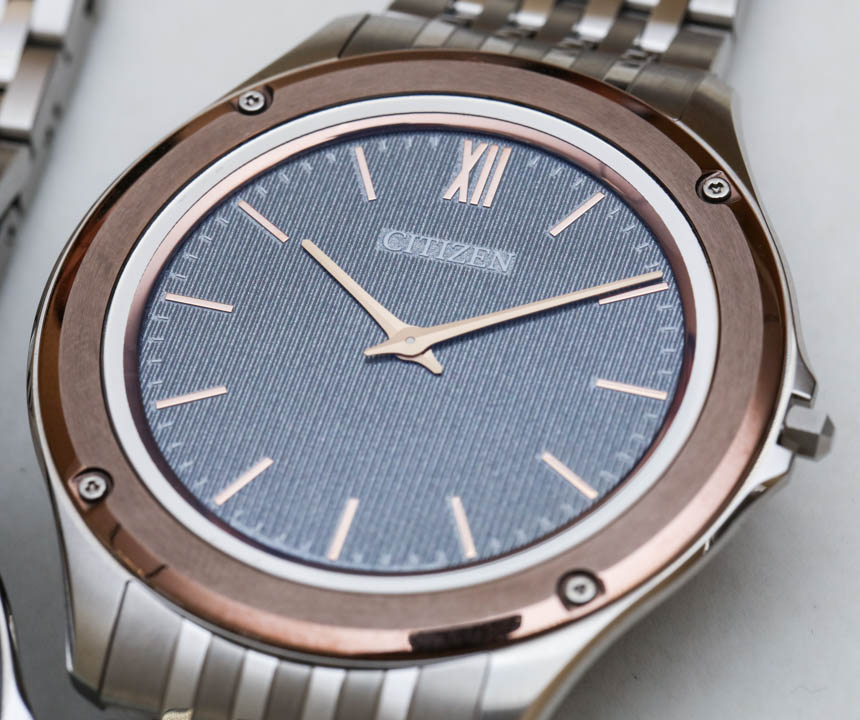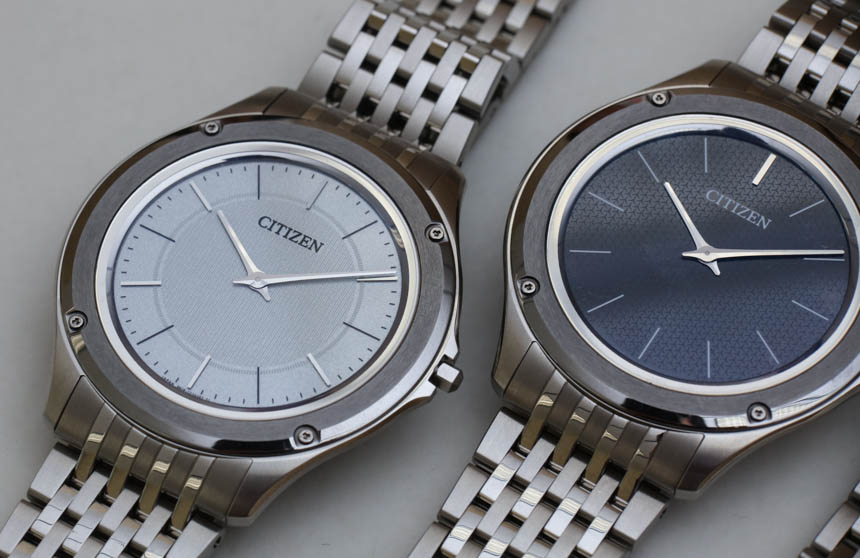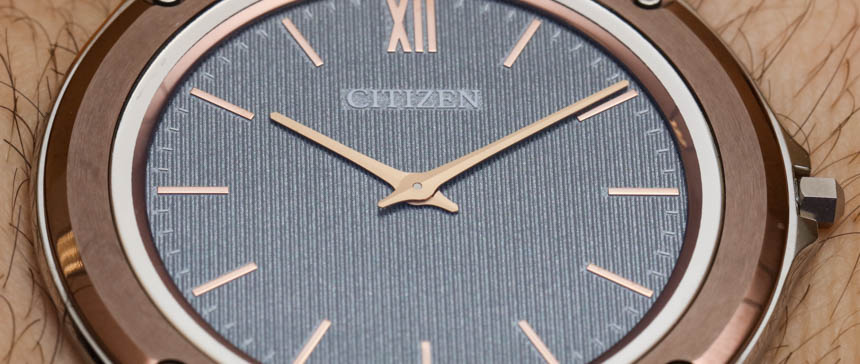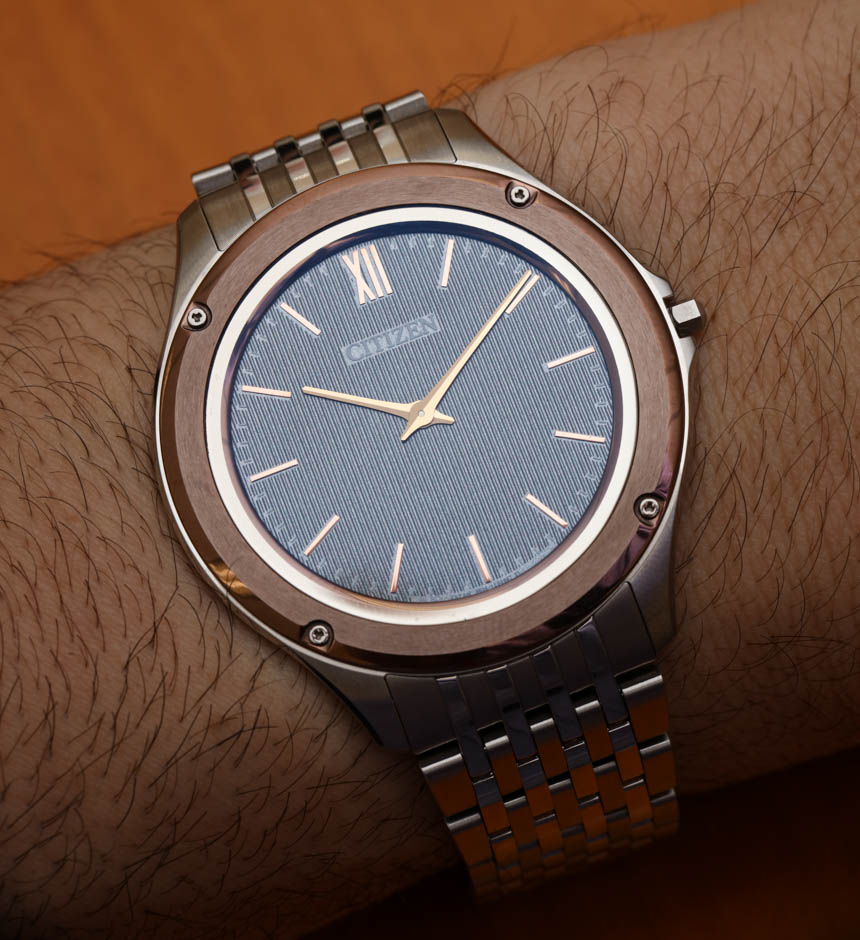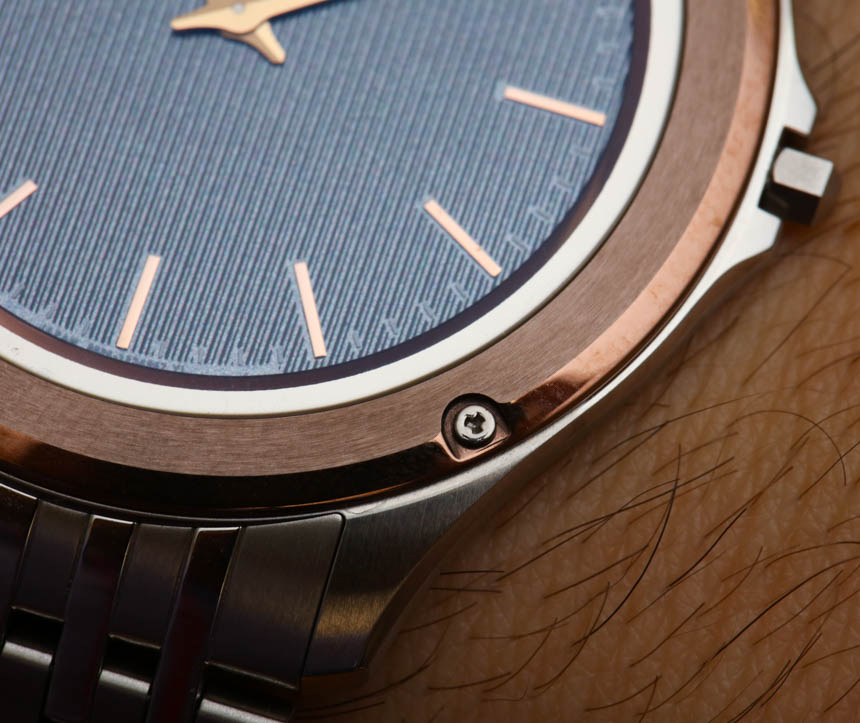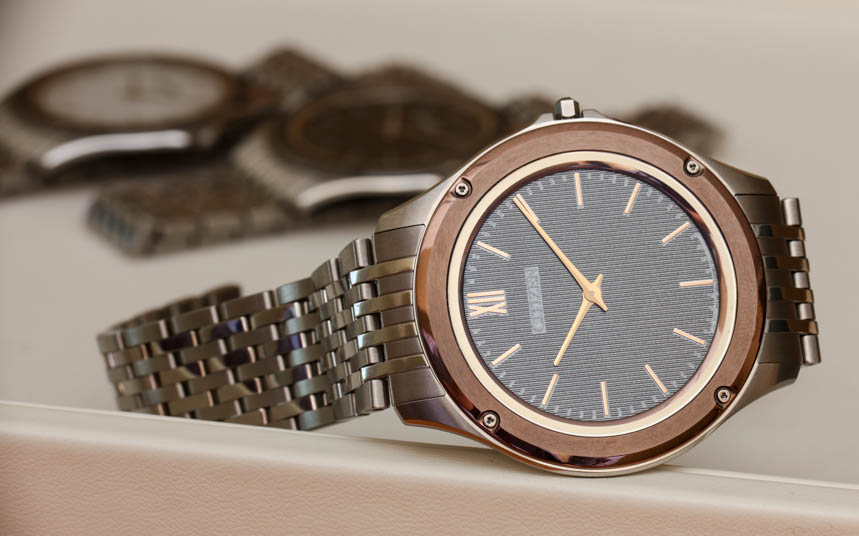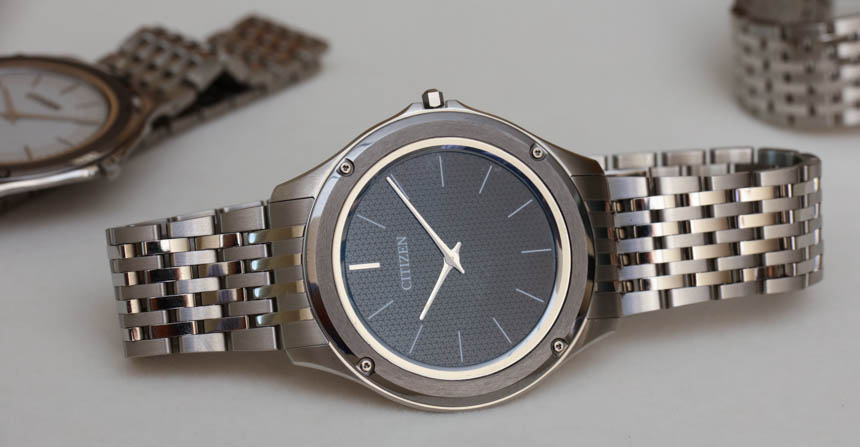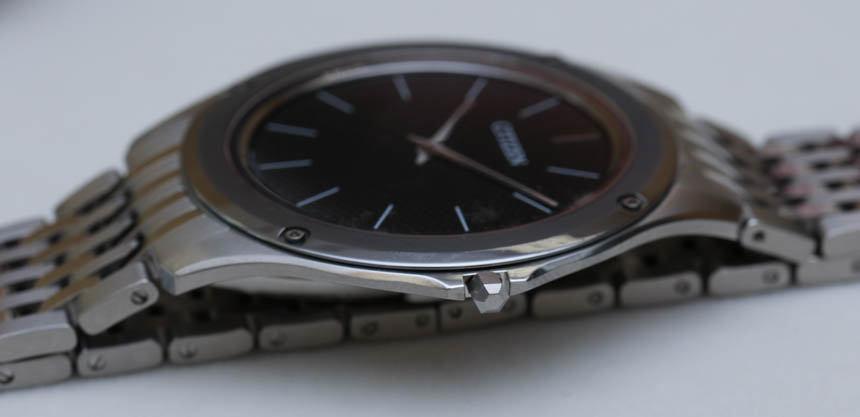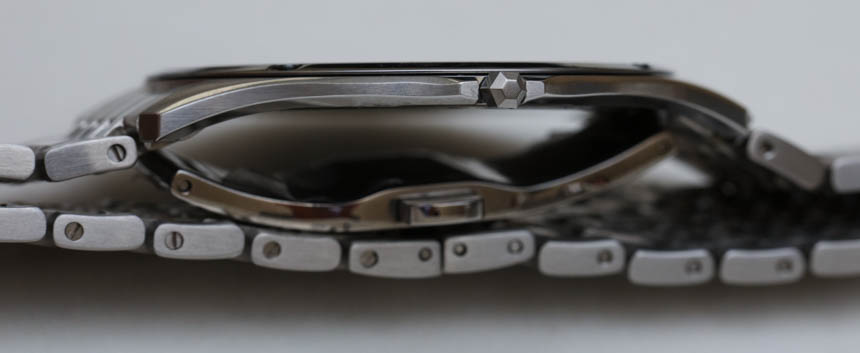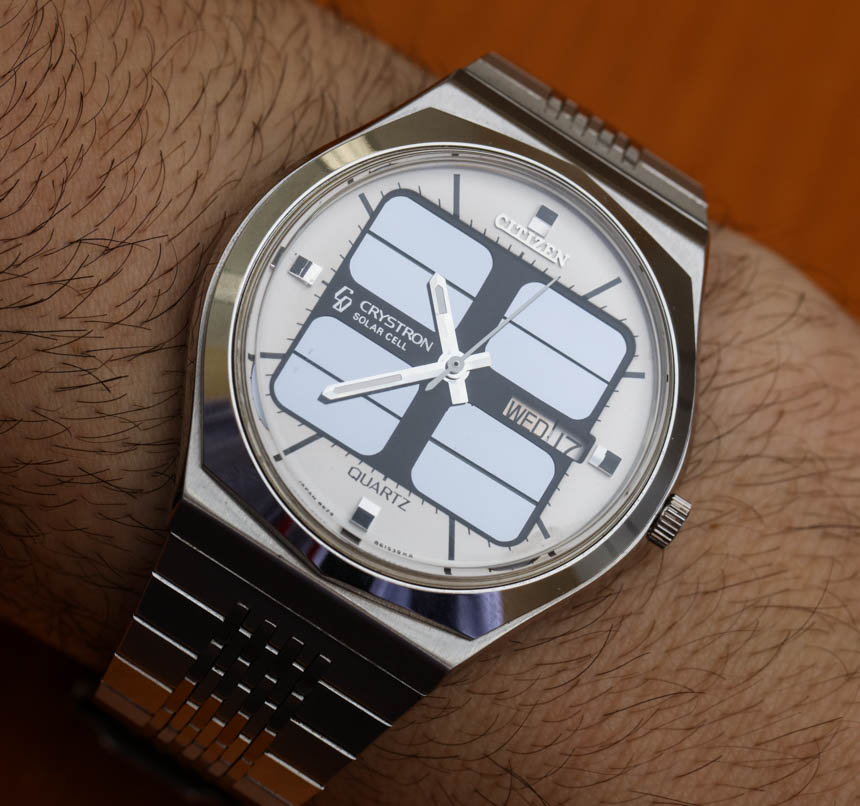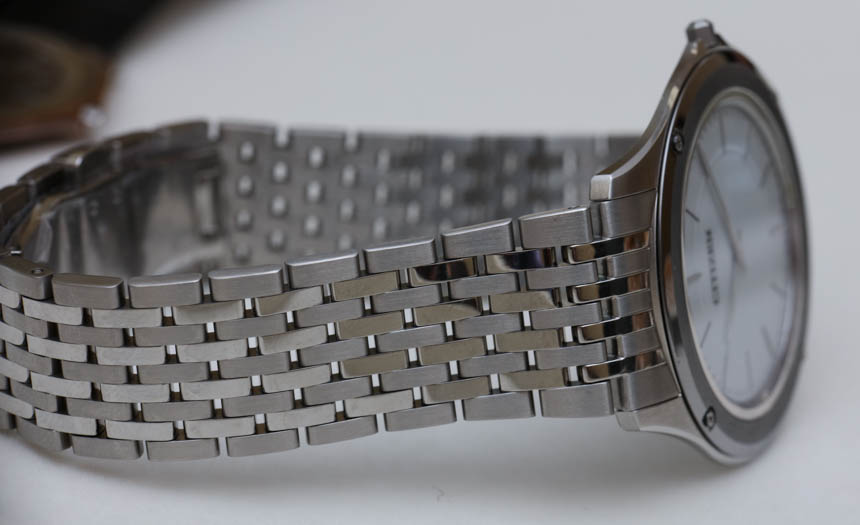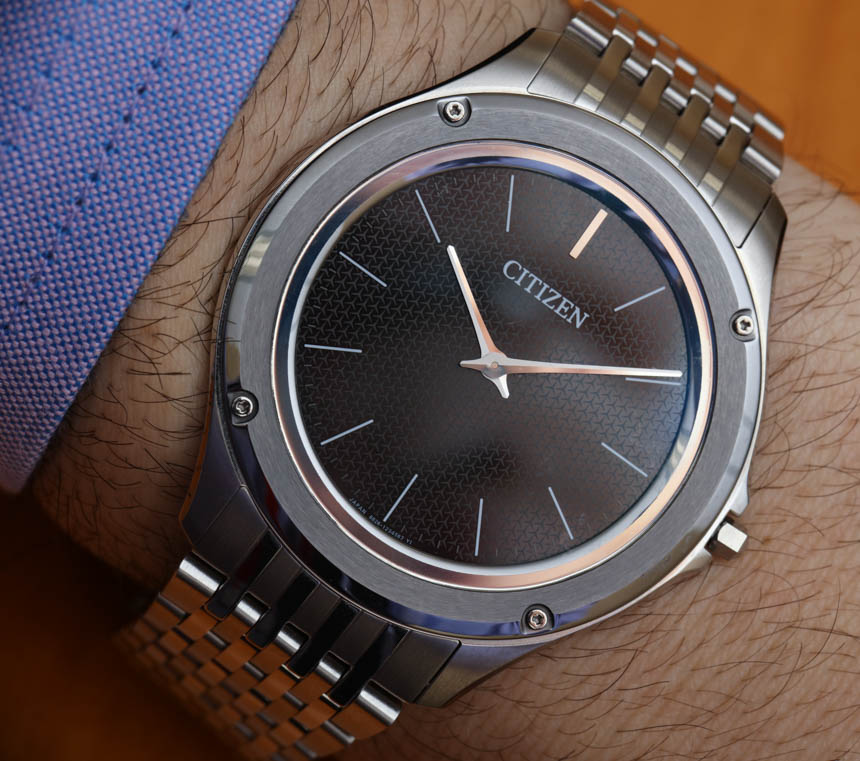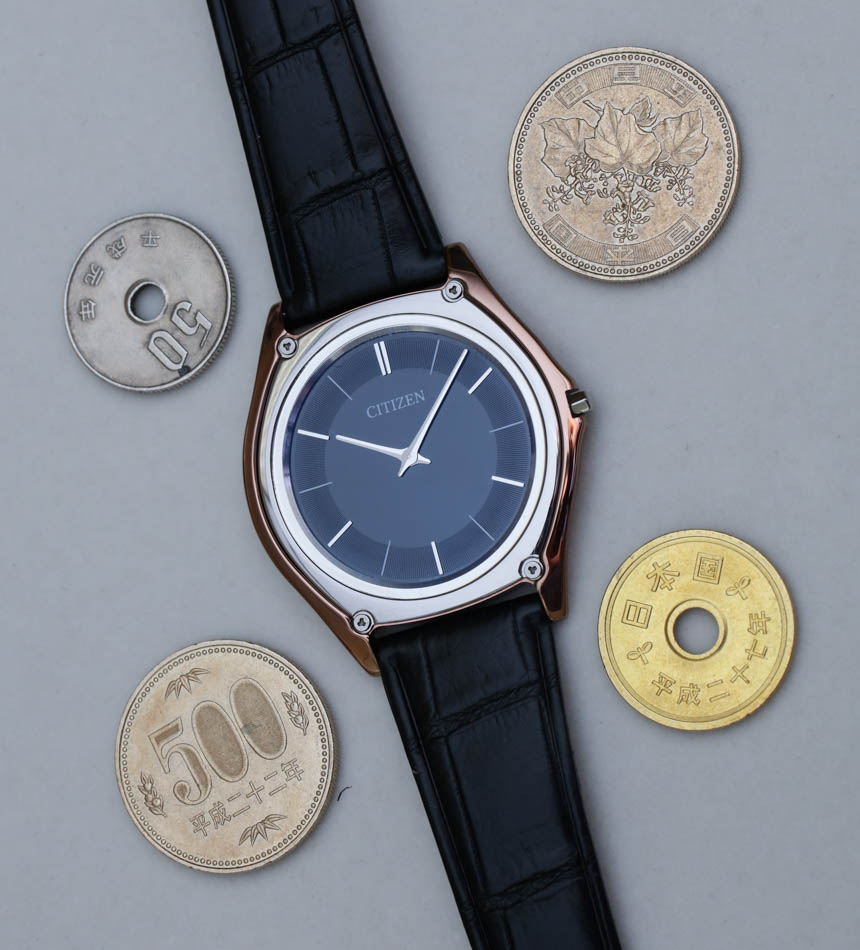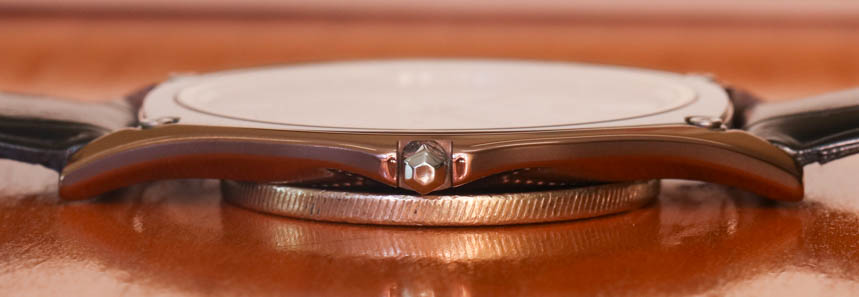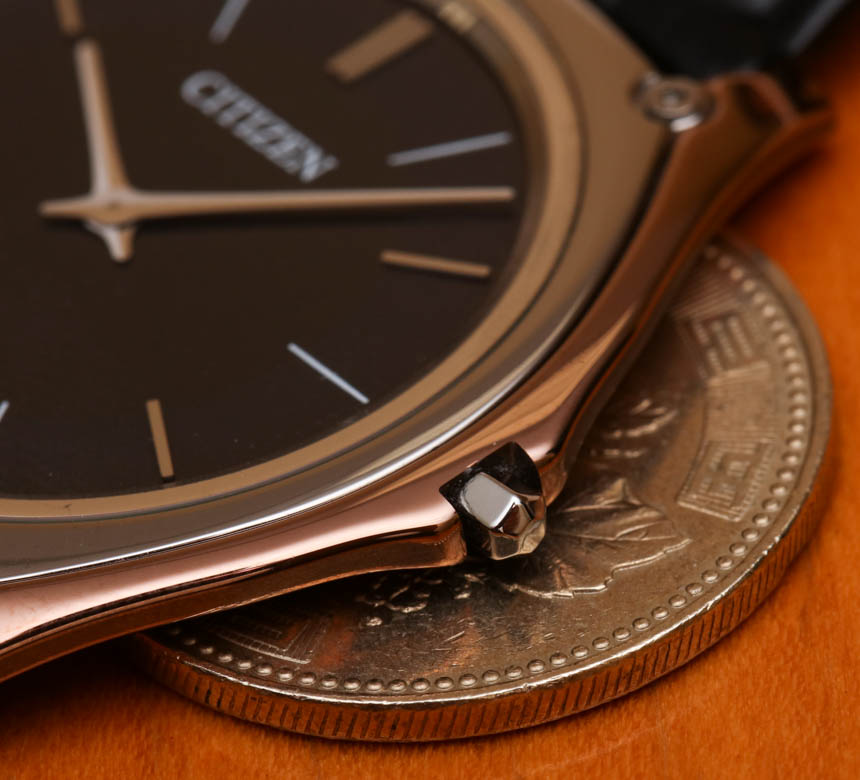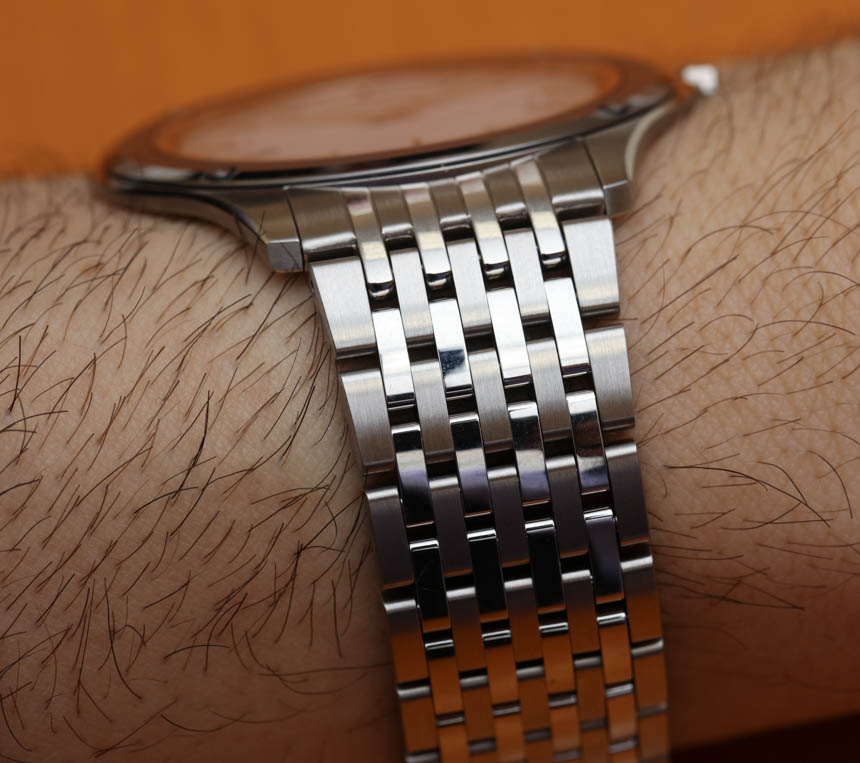
The discussion on materials is important because the Citizen Eco-Drive One limited edition is literally twice as expensive as the standard collection models, and it comes on a strap versus a steel bracelet. The strap is black crocodile leather – which is a material typically used only on higher-end Japanese watches. While the standard collection Citizen Eco-Drive One watches have a Duratect (Citizen’s name for a special coating process which makes steel or titanium much more scratch-resistant) steel cases and cermet bezels, the limited edition model has an entirely cermet case with a tungsten carbide bezel (that they refer to as a “binderless cemented carbide”).
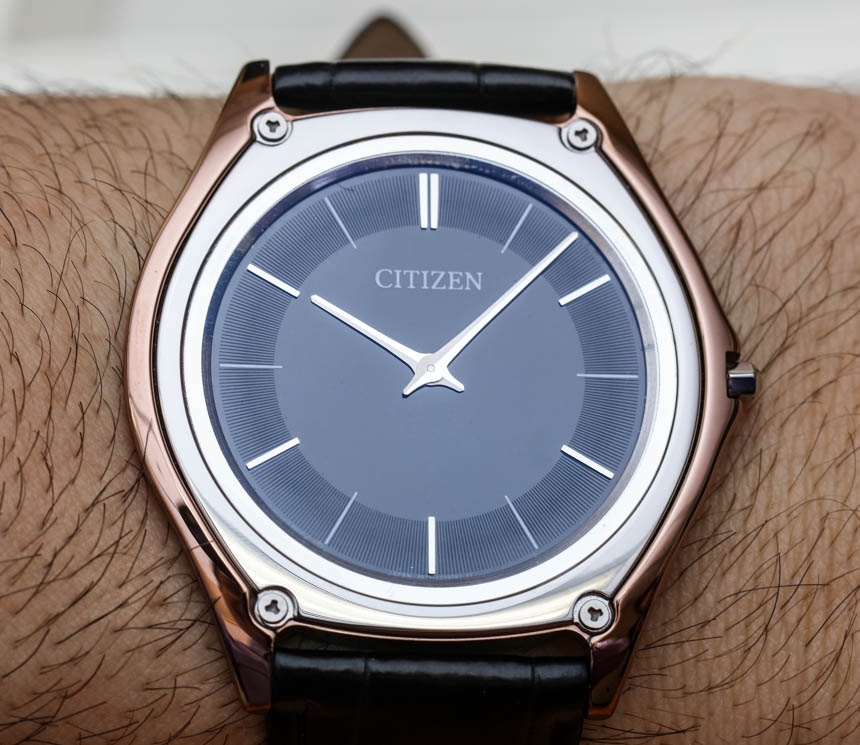
You might be familiar with cermet which is an interesting composite of ceramic and metal, hence the name “cer” (ceramic) and “met” (metal) name. Valued for its rigid strength and ability to be colored and polished like metal, cermet is also sometimes used by high-end Swiss brands such as Audemars Piguet (who has used the material on some Royal Oak bezels, actually). Cermet is likely an important factor in producing a case that will not bend. If enough force is applied, you could theoretically crack a cermet bezel, but I don’t think it has the plasticity to bend. So, if anything, the limited edition Citizen Eco-Drive One is actually more “bend-resistant” than the standard models because it employs more cermet material.
Citizen uses a three-part case for the Citizen Eco-Drive One that has the bezel and caseback sandwiching the middle section using the four screws you can see on the bezel. These go through the entire watch and have bolt-style segments on the rear of the case which are not visible as they are under the caseback. Currently, I am not sure about the crystal material, although I believe it is sapphire, and I am also not sure about the water resistance, although I think it is 30 meters. Again, the pictured models are pre-production prototypes which explains things like the tape on the back of the case and not all the proper dial and caseback markings.
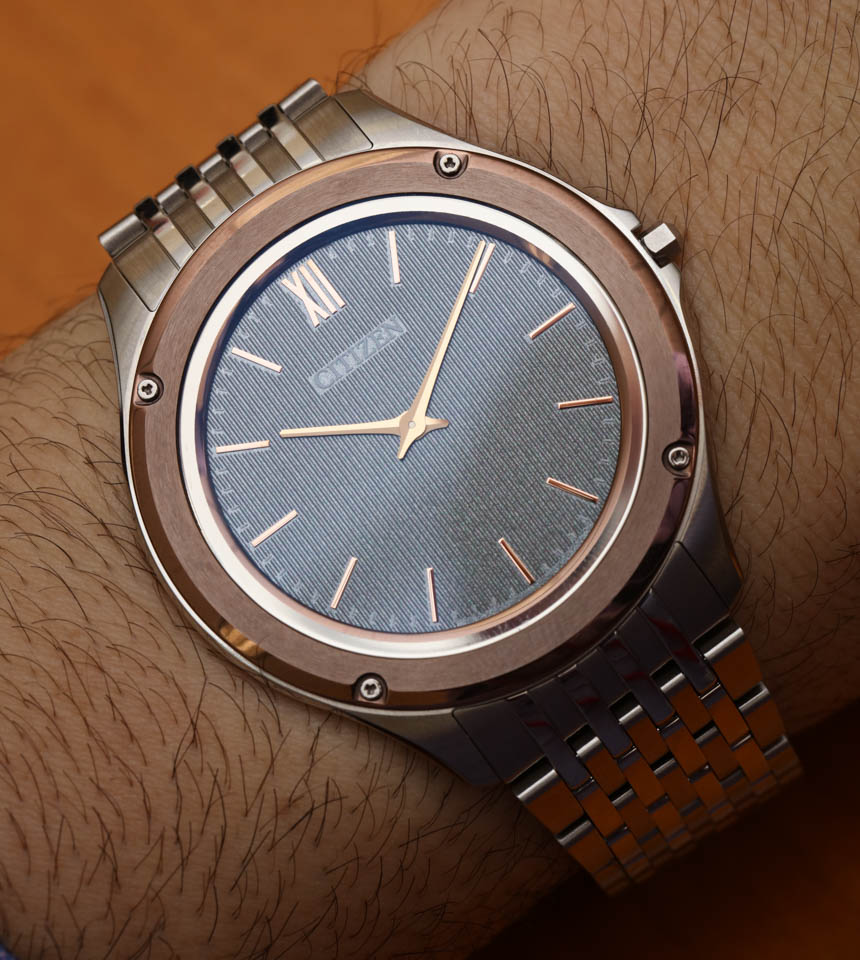
The Citizen Eco-Drive One Limited Edition cermet case is rose gold-toned while the bezel looks like polished steel – though it is not steel. Citizen has yet to come up with a sexy name for the material, but binderless cemented carbide is a mixture of materials that begins with the various elements in powder form. “Binderless” means that there isn’t any particular material in the formula which merely acts to hold the other materials together. Typical binder material might be nickel or cobalt, and the ability to do without them leaves this particular material harder, and almost totally resistant to corrosion or other environmental aging. The main ingredient of the carbide is tungsten, which I believe must be in carbide form because of the shape and thinness. My guess is that it would simply be too difficult or impossible to cut and shape hard pieces of tungsten for this use. Therefore, the bezel on the limited edition should look exactly this way for decades and decades to come, and maintain its high-polish look.
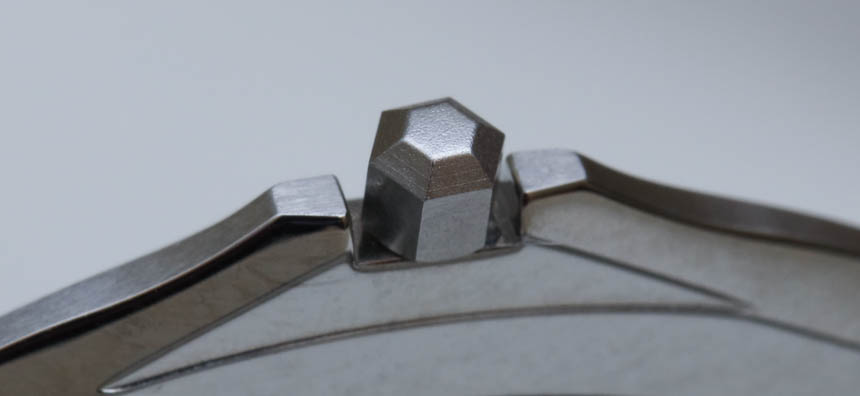
Interestingly enough, the Citizen Eco-Drive One Limited Edition is actually a bit narrower than standard Citizen Eco-Drive One models, even though they are both 2.98mm thick. The Limited Edition AR5014-04E model is 38.15mm wide, while the other models are 39.8mm wide. It is tough to notice the difference, but it is there. Moreover, the black dial of the Citizen Eco-Drive One Limited Edition has a different design than the black-dialed standard Model. In fact, all four of the Eco-Drive One launch models have different dial colors as well as textures. Here, Citizen means to show off some of the flexibility it designed into the production of Eco-Drive dials allowing for things such as color and texture variations.
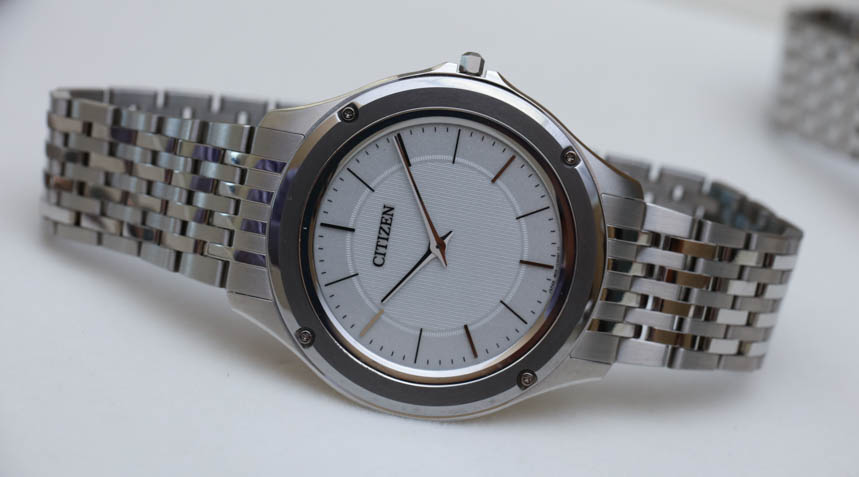
One of the neatest design features of the Citizen Eco-Drive One is the six-sided geometric crown – which is predictably miniature. With that said, as this is an Eco-Drive watch, you really won’t need to be using the crown that much unless you travel.
The Citizen Eco-Drive One is a dress watch with casual appeal. It is difficult to describe the unique pleasure of wearing a watch whose case is under 5mm thick. And at about 3mm thick, the Citizen Eco-Drive One feels like a few sheets of paper on your wrist. I actually compared the watch to some Japanese coins, and the watch is about the same thickness. Very slim watches are a pleasure to wear and work very well with formal attire, or for those people who like a watch but also like to not know they are wearing a watch. It seems to be the Swiss’ desire to produce timepieces that remind you they are on your wrist, but an alternatively good (and in many instances superior) experience is that of wearing a timepiece that does not make itself known unless you are looking to reference it.
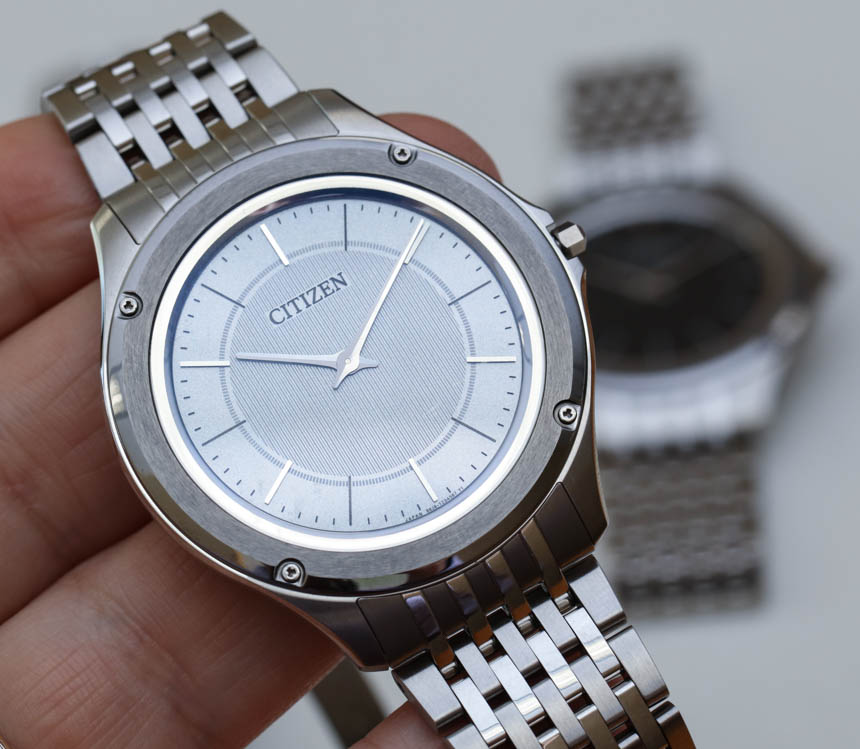
One of the best things about the Citizen Eco-Drive One from a marketing standpoint is that, for one of the first times in recent history, Citizen is offering a relatively understated and elegant watch for the global market. I do hope that Citizen follows Seiko in offering more of its classy and elegantly designed watches for sale outside of Japan – as there is a market for it. What needs to happen more is for aficionados to rediscover the value of high-end quartz in addition to their appreciation of mechanical watches. These two categories of timepieces should never be in competition for collector preferences, but rather be two different but uniquely appealing categories of watches, in my opinion. At least, they are that way for me.
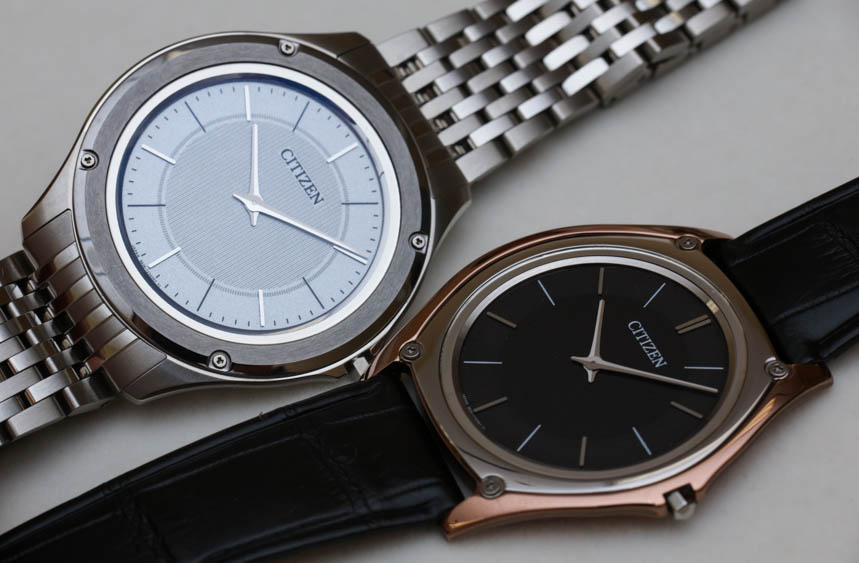
Citizen is producing the Citizen Eco-Drive One Limited Edition AR5014-04E as a set of 800 pieces priced at $4,400. The Citizen Eco-Drive One references AR5000-50E, AR5000-68A, and AR5004-59H are priced at $2,200 each. citizenwatch.com

